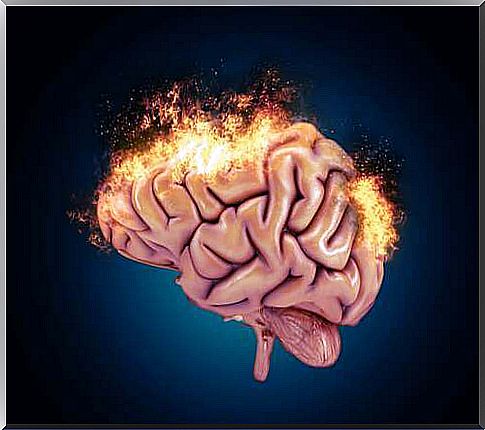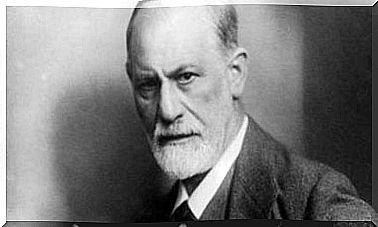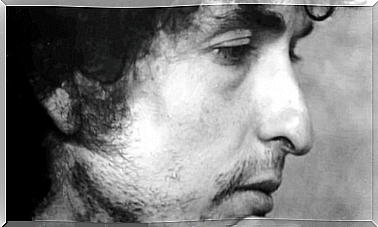Reactive Brain: Anticipating Everything Causes Suffering

The reactive brain orchestrates, facilitates and activates the mechanisms of anxiety. This way of thinking and processing information puts us on alert by anticipating risks that often do not even exist. Likewise, emotions take over, we lose initiative and become even more impulsive and less reflective.
Viktor Frankl very wisely pointed out that when we cannot change a situation that causes us pain or discomfort, we can change our attitude towards that problem to reduce the suffering. This mental strategy is impossible for a reactive brain person. Because that ability to vary the way reality is faced is typical of a proactive subject.
Although the concept of proactivity in recent years has been borrowed from the fields of organization, leadership and work psychology, it is actually a personality trait that has health and psychological balance as its ultimate goal. The upside is that we can all move from reactivity to proactivity to manage adversity efficiently.

How is the brain reactive?
The reactive brain is related to a particular cognitive processing. He sees changes as threats and responds to stimuli by anticipating events in the worst way : with anguish or impulsively. Neuroscientists have spent years trying to understand the neurological basis of anxiety and also what we now know as the hyper-reactive mind.
The 2018 study by Dr. Alexander Olsen, a lecturer in the psychology department of the Norwegian University of Science and Technology, reveals interesting data worth knowing.
Thinking proactively and hyper-reactively, what’s the difference?
The human brain can process information, reason and guide our behavior on the basis of two basic mechanisms: proactivity and hyper-reactivity. Let’s see the difference:
- The proactive system starts with fluid intelligence. This reasoning is the result of our ability to solve problems using logic and identifying patterns, then thinking more thoughtfully.
- Conversely, the reactive brain is more impulsive and must respond quickly to environmental stimuli. It does this because it is often stimulated by fear, by an alarm that activates the amygdala and invites us to react before thinking.
We use both ways of thinking; the reactive system helps us to act in the face of risks and threats from the environment. The proactive approach allows us to make better decisions and manage daily stress more efficiently.
The problem arises when we limit ourselves to using only the first approach, that is, when the reactive brain orchestrates every situation. The result will be getting stuck in a constant state of anxiety.
The reactive brain and white matter
Dr. Alexander Olsen’s team conducted their study in collaboration with the University of Southern California at the Stevens Institute for Neuroimaging and Informatics. The aim was to find out which mechanisms promote and shape the reactive brain. MRI showed that fluid, proactive thinking activates white matter.
Conversely, people who think reactively have a lower density of white matter. The latter is formed by a large and complex network of myelinated axons, essential in brain communications. Furthermore, it is crucial for the connection between the left and right hemisphere.
In short, when you get used to responding to your environment in a reactive way, you enter a state of constant hypercontrol. It only perceives threats, anticipates more problems and lets itself be overcome by stress. These situations have a great impact on the brain, they alter it to the point of disorganizing the network that constitutes the white matter.

How to go from reactivity to proactivity?
The reactive brain cannot be shut down, just as we cannot completely eliminate reactive reasoning from our mind. This way of processing the world is sometimes useful and necessary in the presence of threats or dangers.
The ideal is that the reactivity is activated on specific occasions. Beyond these situations, the proactive mindset will guarantee our well-being by reducing states of anxiety. How do we develop or activate it with greater intensity? Here are some strategies:
- Edward de Bono defined proactive thinking as the mechanism by which we limit ourselves to understanding that things just happen. It means becoming active agents of one’s own reality.
- Emotional management and impulse control are essential and necessary in both cases.
- We need to develop a more reflective mentality, also open to new perspectives. Mental rigidity always leads to reactivity and fear.
- Thinking is also determined by our attitude and the way we deal with events. Being positive, but at the same time realistic, being intuitive but logical at the same time, defines an efficient approach.
- You also need to know how to tolerate frustration and have self-confidence. As bad as things go, we all have the resources to plan and act.
- You may not know it, but doing sports oxygenates and nourishes this very important area of the brain, as well as the white matter.
To conclude, it is very easy to fall into the prison of a reactive brain that anticipates only dangers and threats. This is likely to happen, but we can act accordingly by learning to make plans: if something worries us, we come up with a plan to address this challenge. Only in this way will we be proactive.









